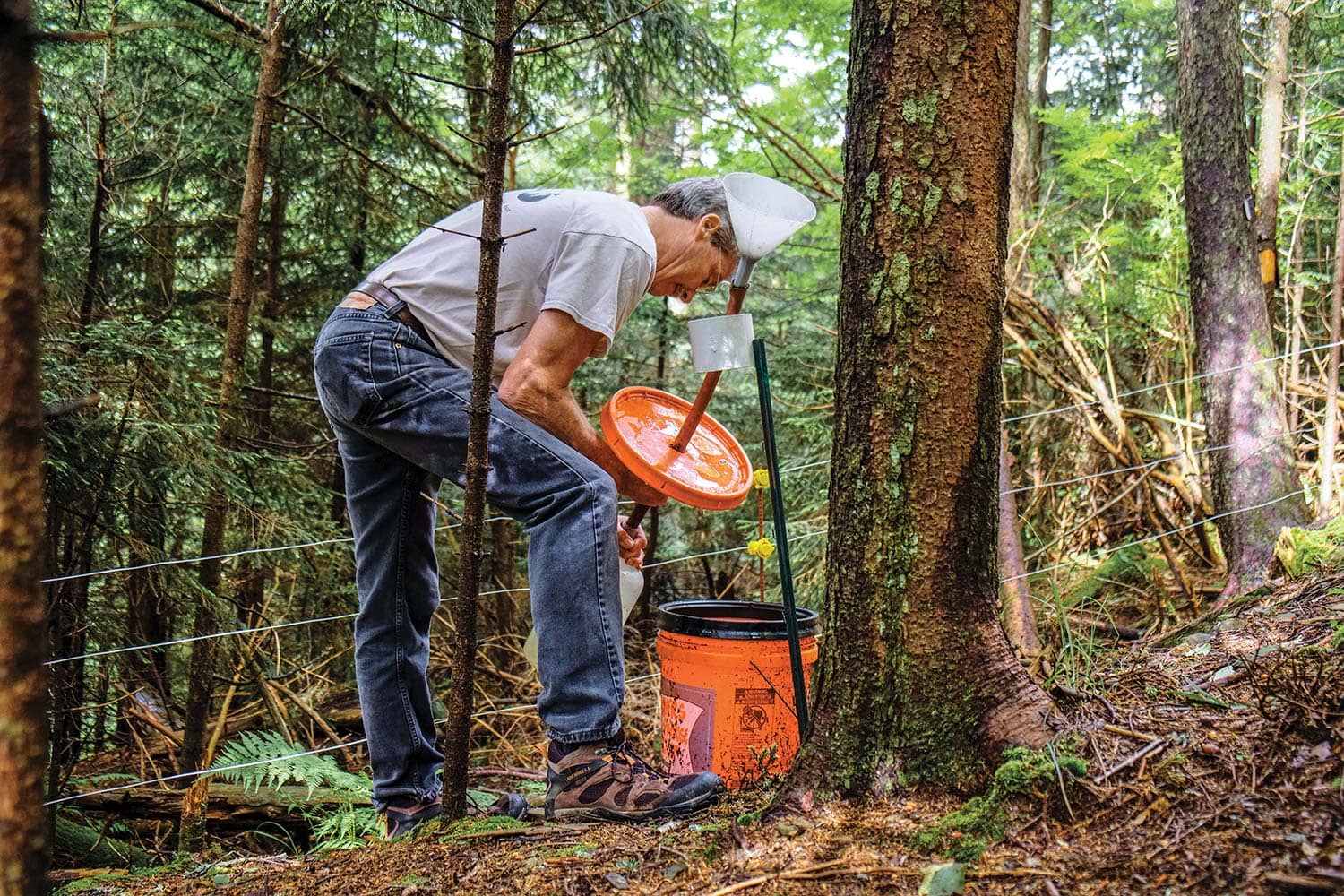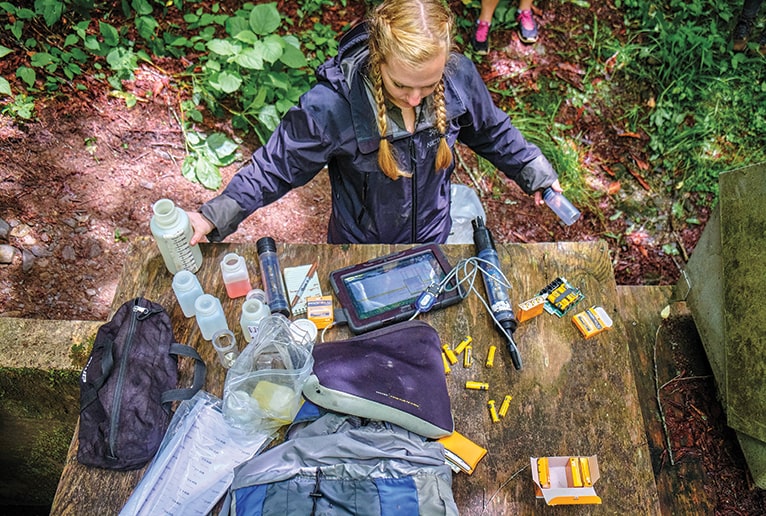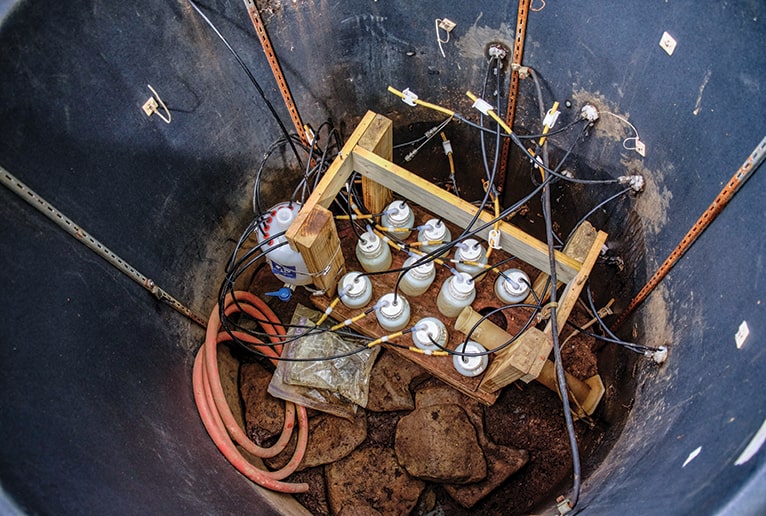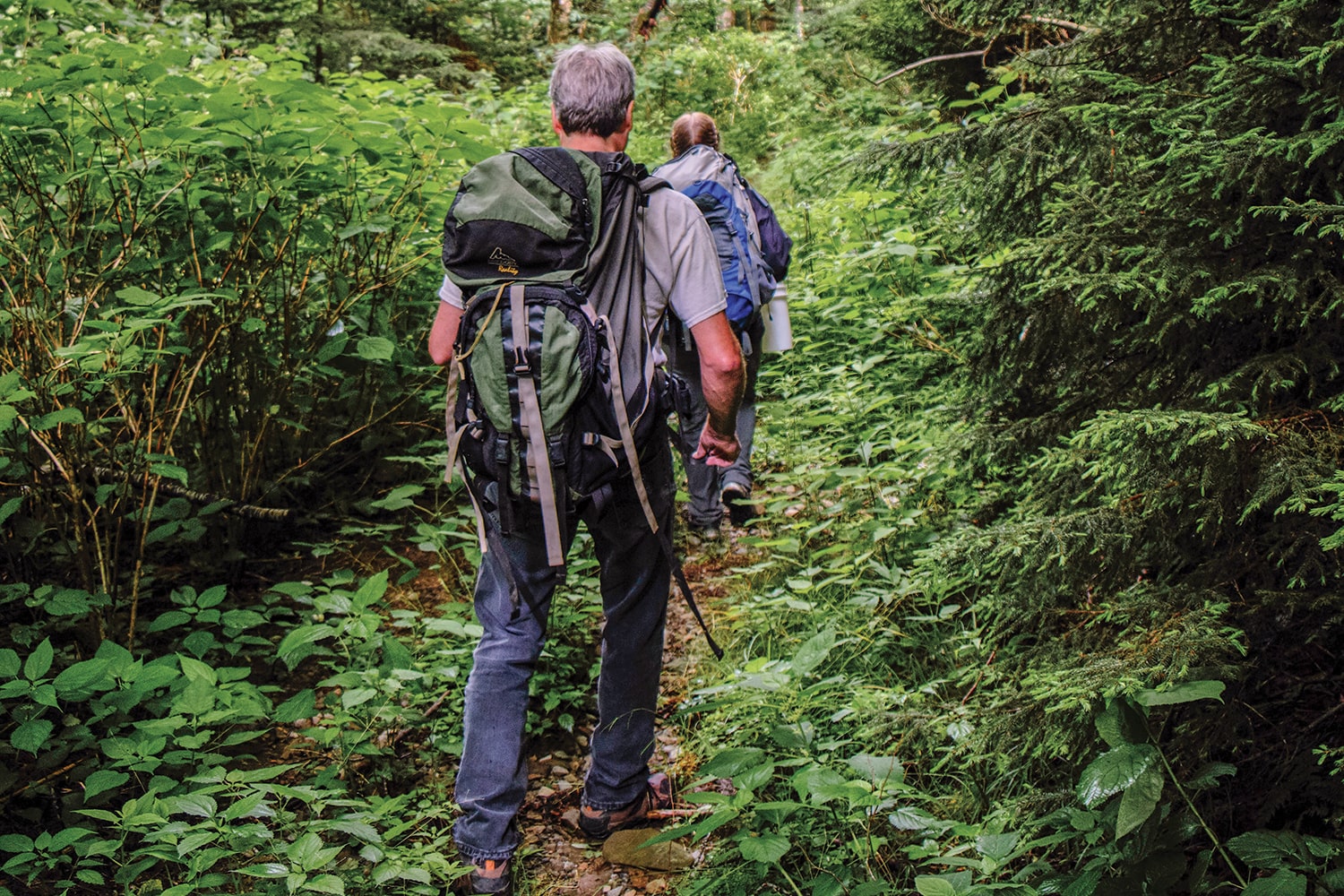In the Great Smoky Mountains National Park, UT engineering professors and students are taking adventurous steps to ensure the quality of our water and air is in check.
At first glance, there is nothing particularly striking about John Schwartz’s workstation. It’s nestled high up on a ridge on the North Carolina side of the park, just southeast of Clingmans Dome. In one spot, a few white buckets collect water from the tree canopy. In another area, he manually cleans sediment out of a flume to ensure the quality of water samples.
And yet, the work that he and his students do at the Noland Divide Water Quality Station has implications in the everyday lives of millions of people: they monitor the levels of acids and other contamination present in the water that flows through the park.
Schwartz, Tennessee Water Resources Research Center and professor of civil and environmental engineering, started working on this project 20 years ago when he first arrived at UT, but the project’s beginnings can be traced back to 1991. The university, along with Oak Ridge National Laboratory, had begun participating in a federally funded program called the Integrated Forest Study, an international collaboration to explore the “effects of atmospheric deposition on forests’ nutrient cycles,” according to the DoE.
Since then, UT students and professors have been collecting and processing water samples every two weeks, and the research has morphed in a number of ways in an attempt to find answers to new questions.
“Imagine all the samples that we have collected for 28 years, every two weeks,” said Schwartz. “That’s a wealth of information.”
Located on the line that divides Tennessee from North Carolina, the Noland Divide Trail sits at an altitude of about 4,000 feet. It is this height that makes it an ideal place to capture all sorts of pollutants coming from as far as the Midwest, says Schwartz.
Power plants in Georgia, coal mining…All of these places emit chemicals that need to be checked periodically to better understand their effects on the diverse and fragile ecosystem that is the Smoky Mountains.”

-

Taylor Blackstone tests water samples. 
Bottles are connected to sensors that help monitor groundwater.
For this purpose, Schwartz and his students manage three collection points in Noland Divide.
The first one is known as the through-fall bucket site. Here, a series of buckets collect the water falling from the tree canopy. This gives researchers an idea of the pollutants that travel in the air and make it to the park.
At the second point, the team collects samples from a stream that travels through a flume, which provides detail on how the pollutants that travel via air are processed on the ground.
The third station is known as the open site. It’s a small platform that holds a weather station in a clearing surrounded by trees. It has an automated water collection bucket with a lid that opens when rain is detected. Because the water doesn’t touch tree leaves, the ground, or come from water streams, the information collected here acts as a baseline for the rest of the samples and gives scientists an insight on how much acid deposition clouds can carry.
It might seem like an underwhelming setting, but the data obtained here is very important. The quality of the water found in the park can tell researchers several things about the current state of the environment, including the very air we breathe.
In fact, Schwartz explains that there was an evident decrease in the levels of pollutants present in the park’s waters between 2005 and 2008, when the Tennessee Valley Authority started using softer coal to fuel their operations and converted some of their plants to natural gas.
“Documenting these changes and trying to explain how and why they occur is vital,” he said.
Very little of this work would be possible without the help of Schwartz’s graduate students.

A Mission for Adventure-seekers
Schwartz’s students find the research exciting and interesting, but say that the real treat is having the national park serve as their very own office, a perk that comes with breathtaking views.
To get to the sites, students drive about 90 minutes from the Knoxville campus, then hike about a mile through thick forest on what it is mostly an unmarked trail. To avoid drawing attention to equipment and experiments, the trail to the research station is unkept—in some places, the trail is overgrown with grass more than 4 feet high.
“It’s one of the things that drew me to this job,” said Taylor Blackstone, one of Schwartz’s PhD students and current caretaker of the research site. “But it is not for everybody. You kind of have to be a natural explorer to like this.”
For Blackstone, the real payoff of his work is being part of something much bigger than herself.
“It’s just so rewarding to have the opportunity to do this work with the University of Tennessee,” Blackstone says. “Doing research that can have such an impact on communities everywhere, and being able to contribute to a better, cleaner environment is a privilege to me.”
